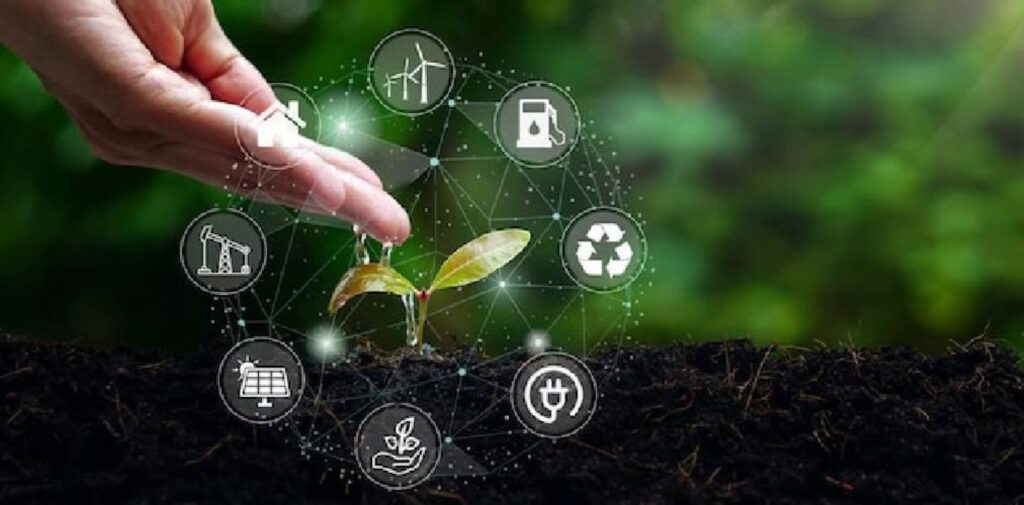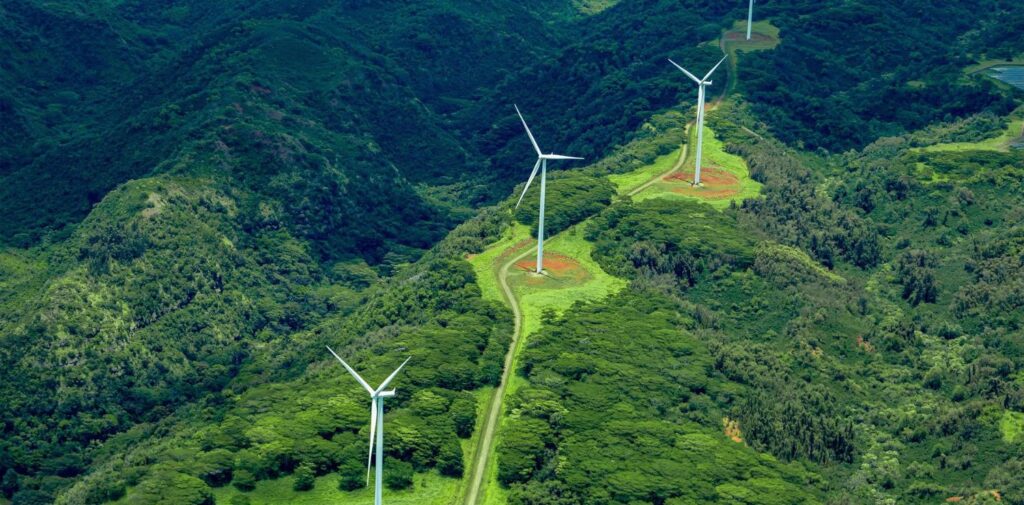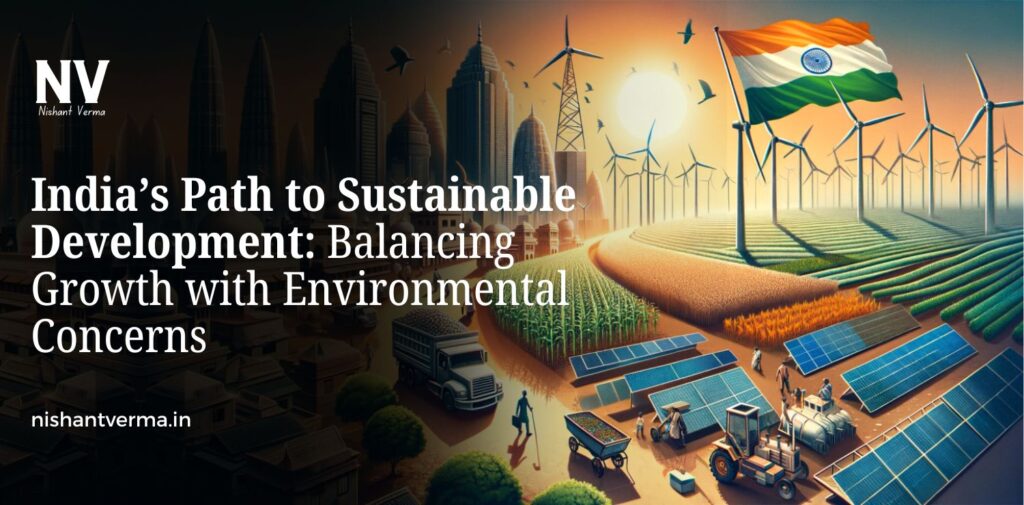India, one of the fastest-growing economies in the world, stands at a crossroads. On one side, there is the pressing need for economic growth, with millions of people depending on development for better standards of living. On the other side, there is an urgent need to address environmental challenges such as pollution, climate change, and resource depletion.
The question that India faces is how to balance these two competing needs — rapid economic growth and environmental sustainability. The path to sustainable development is a challenging one, but it is not an impossible task. This article explores India’s journey towards sustainable development, the challenges it faces, and the steps it is taking to ensure a future where both economic growth and environmental protection coexist harmoniously.
Understanding Sustainable Development
Sustainable development refers to a model of growth that meets the needs of the present without compromising the ability of future generations to meet their own needs. It is based on three core pillars: economic development, social inclusion, and environmental protection. For a country like India, which is home to a vast population and a rapidly expanding economy, achieving sustainable development requires balancing the need for industrialization and infrastructure development with the responsibility to protect the environment and ensure social equity.
In India, where millions still live in poverty and lack basic services like healthcare, education, and clean water, economic growth is essential. However, this growth must be inclusive and environmentally conscious. This means that India must find ways to develop its economy while reducing its ecological footprint.

The Environmental Challenges India Faces
India’s rapid economic growth has brought significant improvements in the standard of living for many, but it has also led to severe environmental challenges. Pollution, deforestation, water scarcity, and climate change are just a few of the critical issues facing the country today.
Air pollution is one of the most pressing concerns. India’s cities, particularly Delhi, suffer from some of the highest levels of air pollution in the world. Vehicle emissions, industrial activities, and burning of crop residue contribute significantly to air quality deterioration, affecting the health of millions of people. According to the World Health Organization, air pollution is one of the leading causes of death in India.
Water scarcity is another major challenge. India has a large population that depends on limited water resources, and over-extraction of groundwater, pollution of rivers, and inefficient water management systems are putting immense pressure on the country’s water supply. Many regions in India are already experiencing droughts and water shortages, and this is expected to worsen with climate change.
Deforestation is also a growing concern. As the demand for land increases due to industrialization and urbanization, forests are being cleared for agriculture, infrastructure development, and mining. This not only contributes to loss of biodiversity but also affects the environment by increasing carbon emissions and reducing the land’s ability to absorb CO2.
Climate change presents a long-term threat to India’s future. Rising temperatures, erratic rainfall patterns, and extreme weather events such as floods, droughts, and cyclones are increasingly affecting agriculture, food security, and livelihoods. India’s coastal cities are particularly vulnerable to sea-level rise and cyclonic storms.
India’s Commitment to Sustainable Development
Despite these challenges, India has made significant strides towards adopting sustainable development practices. The Indian government, businesses, and citizens are increasingly aware of the need to balance economic growth with environmental preservation. India’s commitment to sustainability is evident in several national policies and international agreements.
India’s National Action Plan on Climate Change (NAPCC), launched in 2008, outlines the country’s strategy for mitigating and adapting to climate change. The plan includes initiatives aimed at improving energy efficiency, promoting renewable energy, and enhancing the resilience of vulnerable communities. Under the NAPCC, India has set ambitious targets for reducing its carbon intensity (the amount of CO2 emitted per unit of GDP) by 33-35% by 2030, compared to 2005 levels.
India has also made significant progress in increasing the share of renewable energy in its energy mix. The country is a global leader in solar power generation and has set a target of 175 GW of renewable energy capacity by 2022, including 100 GW from solar energy alone. India is also working towards expanding wind energy capacity, as well as developing bioenergy and hydropower resources. These initiatives not only reduce the country’s reliance on fossil fuels but also help create jobs and stimulate economic growth in the renewable energy sector.
In 2015, India played a key role in the Paris Agreement on climate change, where countries agreed to limit global warming to well below 2°C, with efforts to limit it to 1.5°C. As part of this agreement, India committed to achieving net-zero emissions by 2070. While this goal is long-term, it reflects India’s recognition of the need for climate action and its responsibility to future generations.

The Role of Technology in Sustainable Development
Technology has emerged as a powerful tool in India’s pursuit of sustainable development. Innovations in various sectors are helping India meet its environmental goals while fostering economic growth. The adoption of clean technologies in energy production, transportation, agriculture, and industry is critical for reducing the country’s environmental impact.
In the energy sector, India is increasingly investing in smart grids and energy storage solutions to support the integration of renewable energy into the national grid. The development of electric vehicles (EVs) is another area where technology is playing a key role in reducing emissions from the transportation sector. Several Indian companies are working on manufacturing affordable EVs and setting up EV charging infrastructure across the country.
In agriculture, technology is helping improve water use efficiency and reduce the environmental impact of farming practices. The use of drip irrigation, precision farming, and climate-resilient crop varieties can help farmers adapt to changing weather patterns and optimize the use of resources. Additionally, innovations in organic farming and sustainable pest control are helping reduce the environmental damage caused by chemical fertilizers and pesticides.
Technology is also transforming urban development. Smart city initiatives in cities like Bhubaneswar, Pune, and Gurugram are integrating sustainable urban planning practices, such as efficient waste management, renewable energy use, and energy-efficient buildings. These efforts are designed to reduce the ecological footprint of cities while improving the quality of life for residents.

The Role of Citizens and Businesses in Sustainability
While the government plays a central role in promoting sustainable development, the involvement of citizens and businesses is equally crucial. Individuals can contribute to sustainability by adopting greener lifestyles, such as reducing waste, conserving water, and using energy-efficient products. The growing popularity of sustainable fashion, eco-friendly products, and plant-based diets reflects a shift in consumer preferences towards environmentally conscious choices.
Businesses, too, are increasingly recognizing the importance of sustainability. Many companies are adopting corporate social responsibility (CSR) initiatives that focus on environmental conservation, such as reducing carbon emissions, recycling, and promoting sustainable sourcing. The concept of the circular economy, where products are designed for reuse and waste is minimized, is gaining traction in India’s corporate sector.
Moreover, the rise of impact investing and green finance is encouraging businesses to align their goals with environmental sustainability. Investors are now looking for companies that not only provide financial returns but also contribute positively to society and the environment. This shift in investment patterns is helping drive the growth of green technologies and sustainable practices across various industries.
India Path to Sustainable Development: Challenges and Opportunities
India path to sustainable development is fraught with challenges, but it is also full of opportunities. The country’s large and growing population, urbanization, and industrialization put immense pressure on its natural resources. At the same time, India’s young population, thriving digital economy, and entrepreneurial spirit provide a solid foundation for sustainable growth.
To achieve its sustainability goals, India will need to continue investing in clean technologies, renewable energy, and efficient resource management. It will also need to prioritize inclusive growth, ensuring that the benefits of development reach all sections of society, particularly the marginalized and rural populations.
In conclusion, India’s journey towards sustainable development is a complex but necessary process. It requires the government, businesses, and citizens to work together to strike a balance between economic growth and environmental conservation. By leveraging technology, adopting green practices, and making conscious choices, India can build a future that is both prosperous and sustainable for generations to come.




